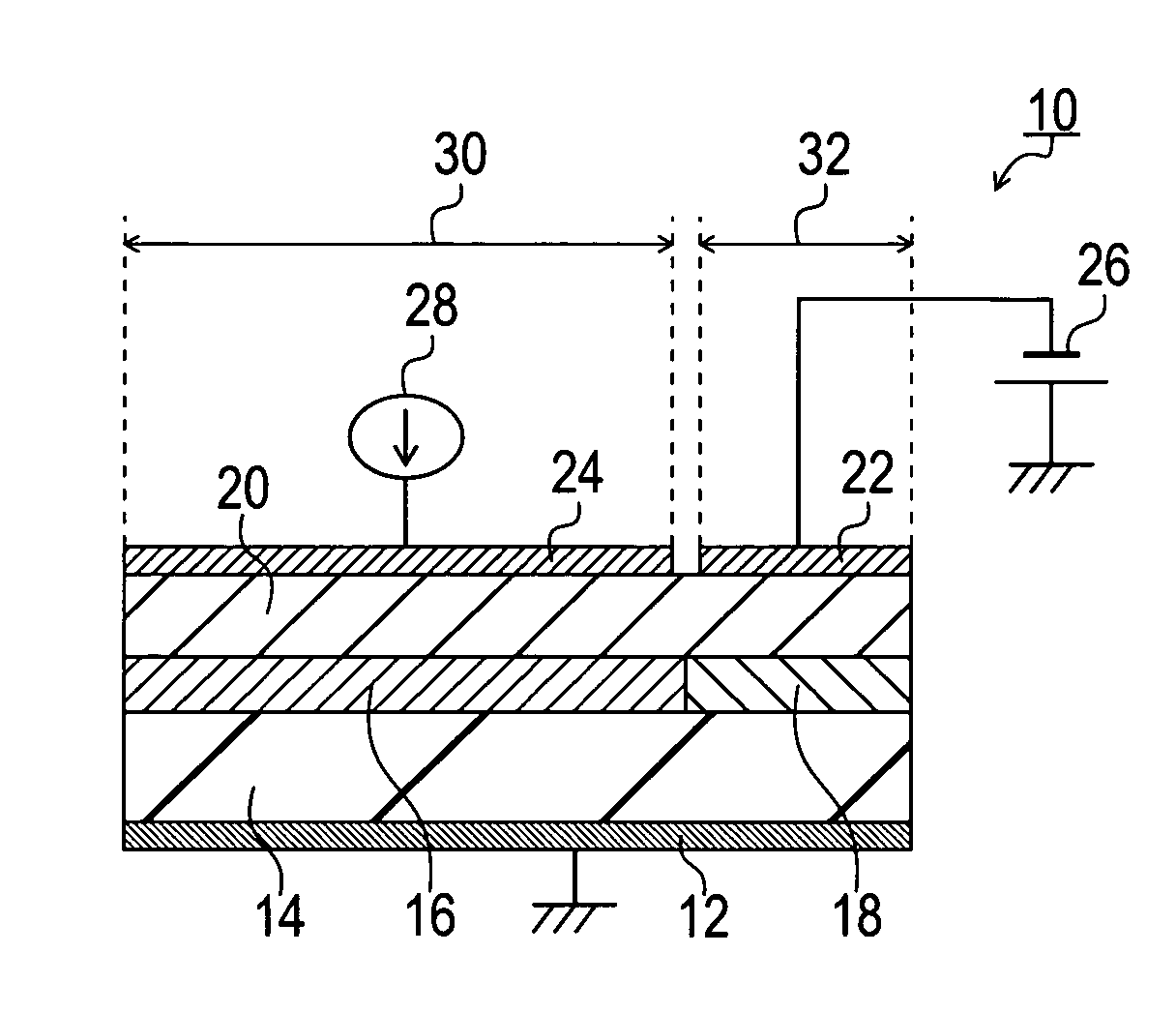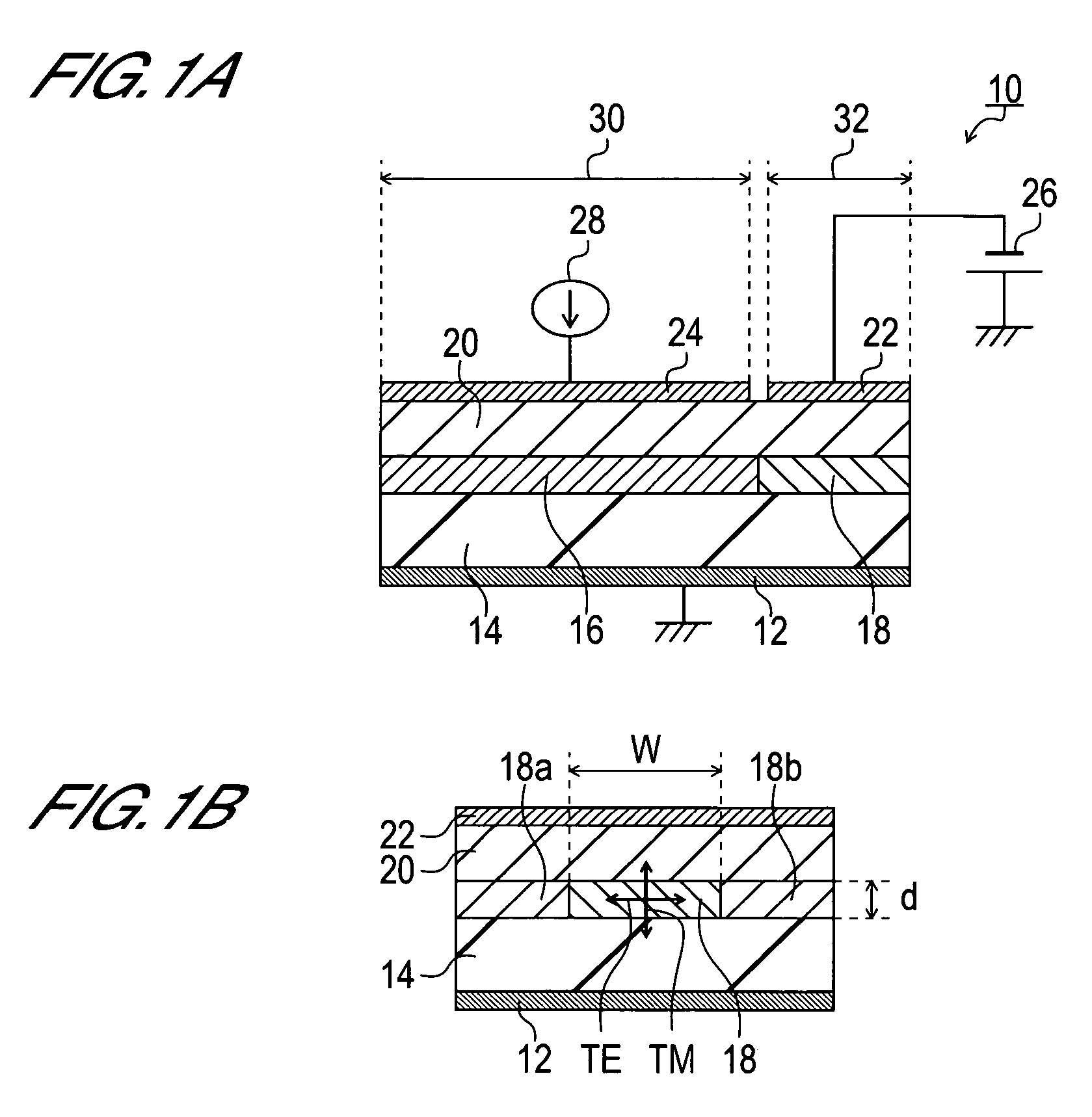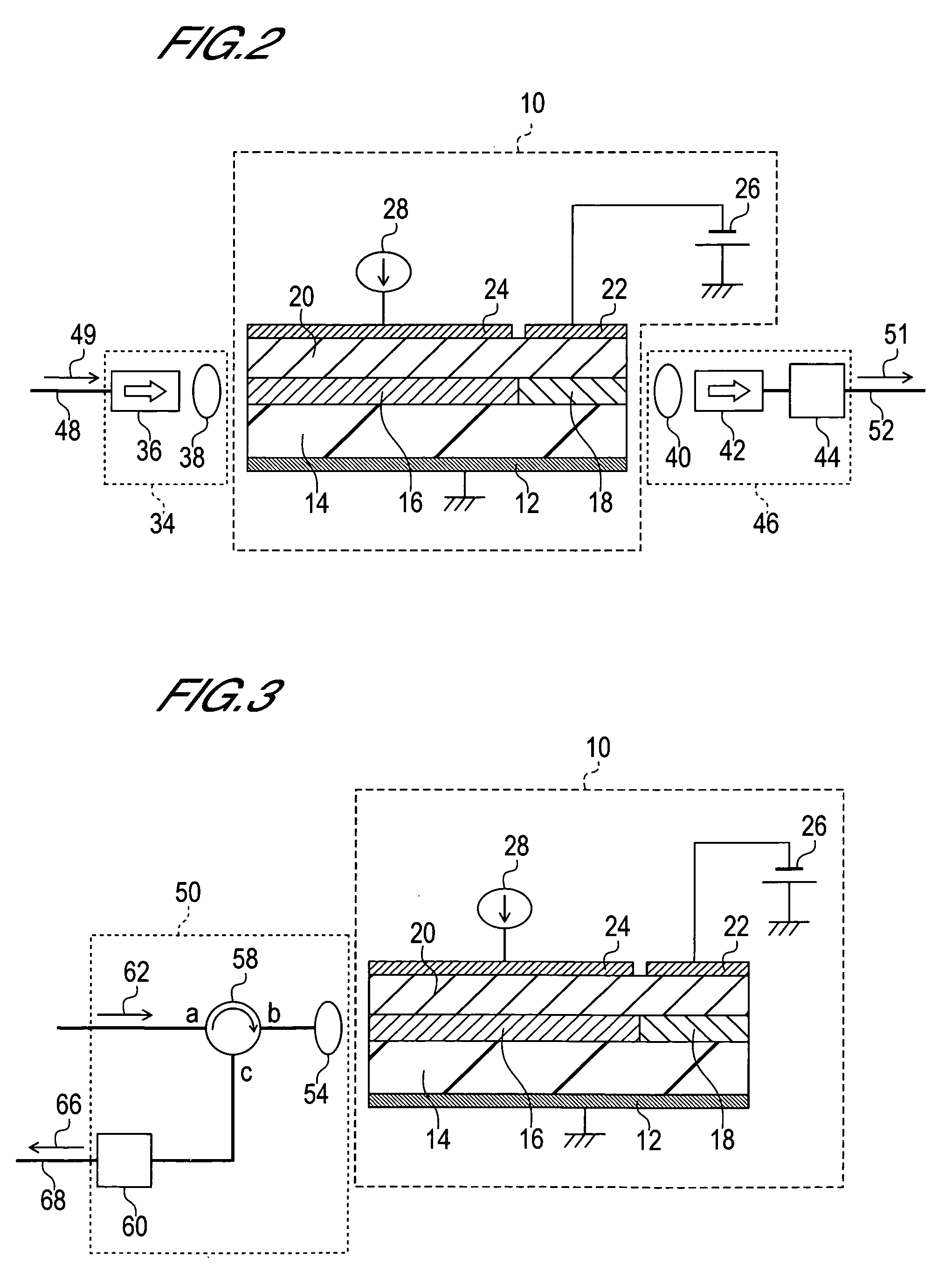Passive mode-locked semiconductor laser diode, and optical clock signal extracting device
a semiconductor laser diode and modelocked technology, applied in the direction of electromagnetic transmission, electromagnetic lasers, apparatus using atomic clocks, etc., can solve the problems of deteriorating optical signal quality, difficult for electronic devices to extract clock signals, and distortion generation of frequency and time-pulse waveforms to become more remarkable problems
- Summary
- Abstract
- Description
- Claims
- Application Information
AI Technical Summary
Benefits of technology
Problems solved by technology
Method used
Image
Examples
Embodiment Construction
[0096]Hereinafter, embodiments according to the present invention will be explained, referring to drawings. Here, each of the drawings illustrates a configuration example according to the present invention, and is only a schematic view showing the arrangement of members and the like for easy understanding of the present invention, and the present invention is not limited to the illustrated examples. Moreover, though specific materials and conditions, and the like will be used in the following explanations in some cases, the above materials and conditions are only preferable examples, and, accordingly, the present invention will not be limited to the materials and conditions. Moreover, duplicated explanations of similar members throughout the drawings will be eliminated in some cases. Moreover, an optical path will be shown by a thick line, and a transmission line for an electric signal will be shown by a thin line.
[0097]
[0098]The structure of the passive mode-locked semiconductor la...
PUM
 Login to View More
Login to View More Abstract
Description
Claims
Application Information
 Login to View More
Login to View More - R&D
- Intellectual Property
- Life Sciences
- Materials
- Tech Scout
- Unparalleled Data Quality
- Higher Quality Content
- 60% Fewer Hallucinations
Browse by: Latest US Patents, China's latest patents, Technical Efficacy Thesaurus, Application Domain, Technology Topic, Popular Technical Reports.
© 2025 PatSnap. All rights reserved.Legal|Privacy policy|Modern Slavery Act Transparency Statement|Sitemap|About US| Contact US: help@patsnap.com



